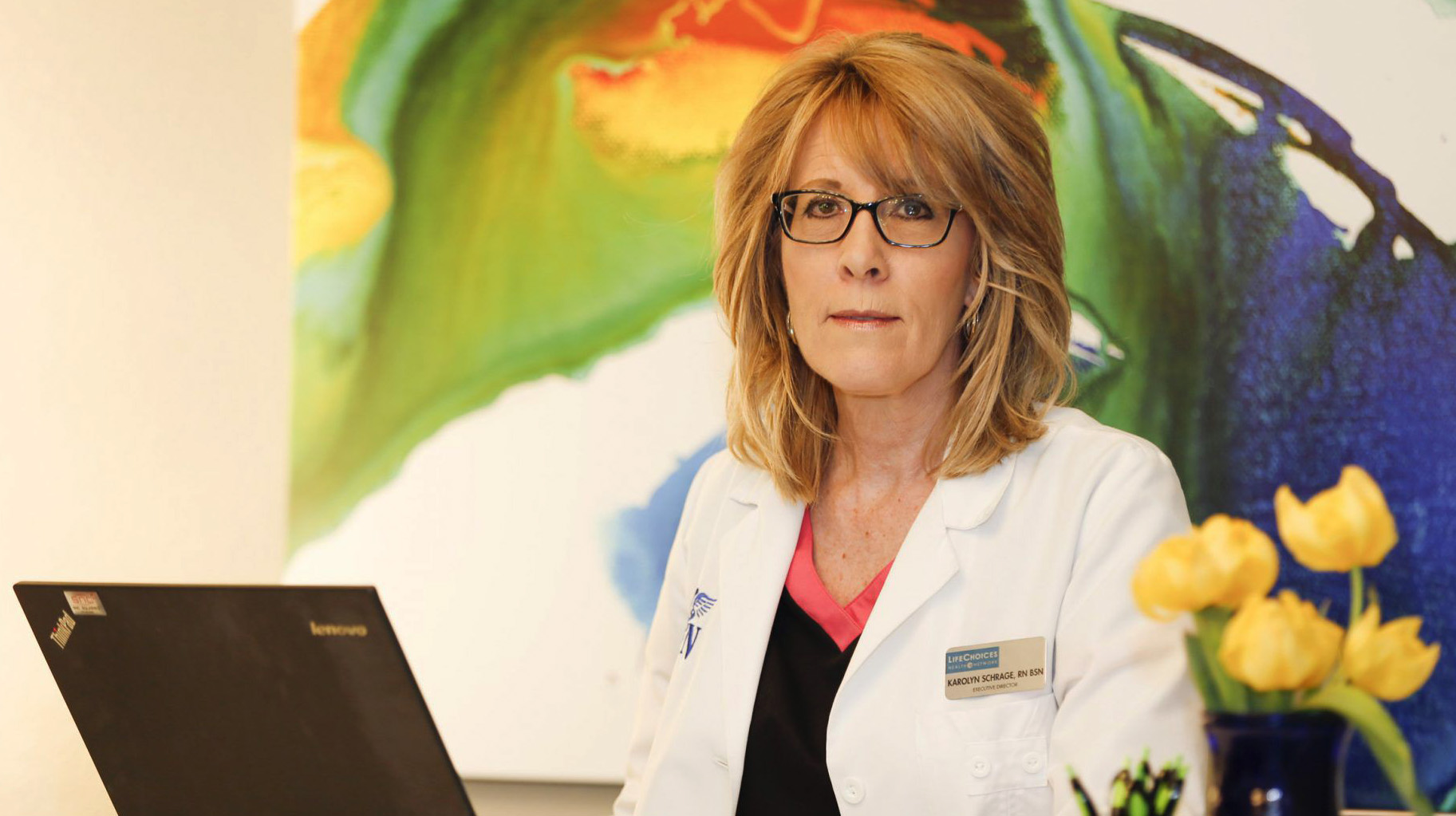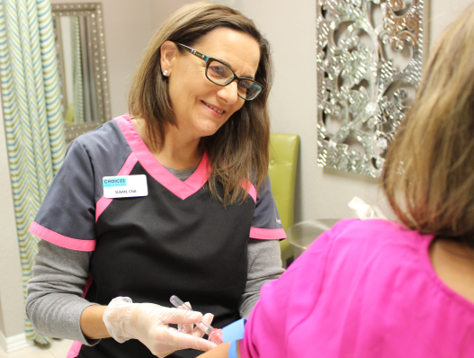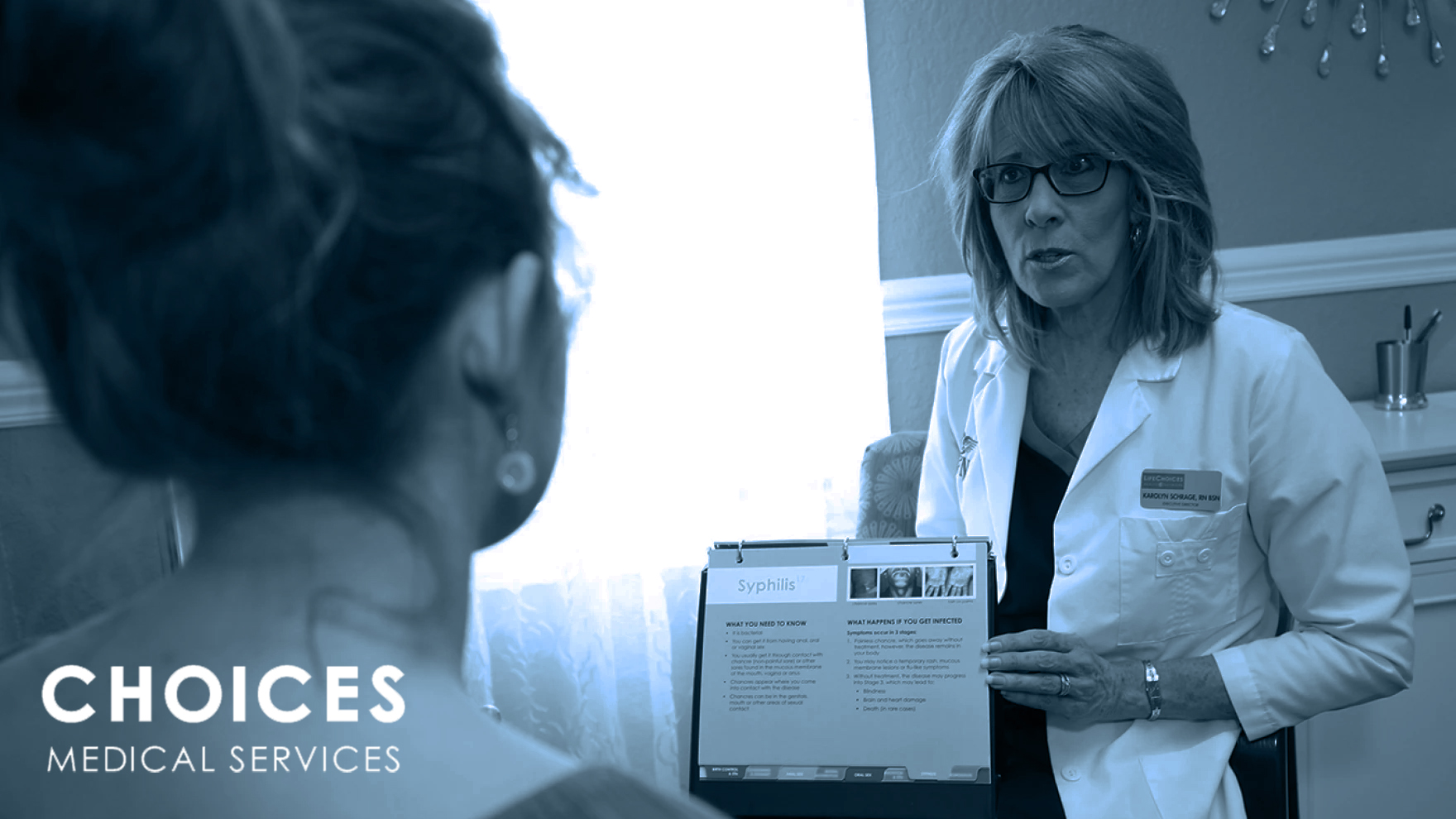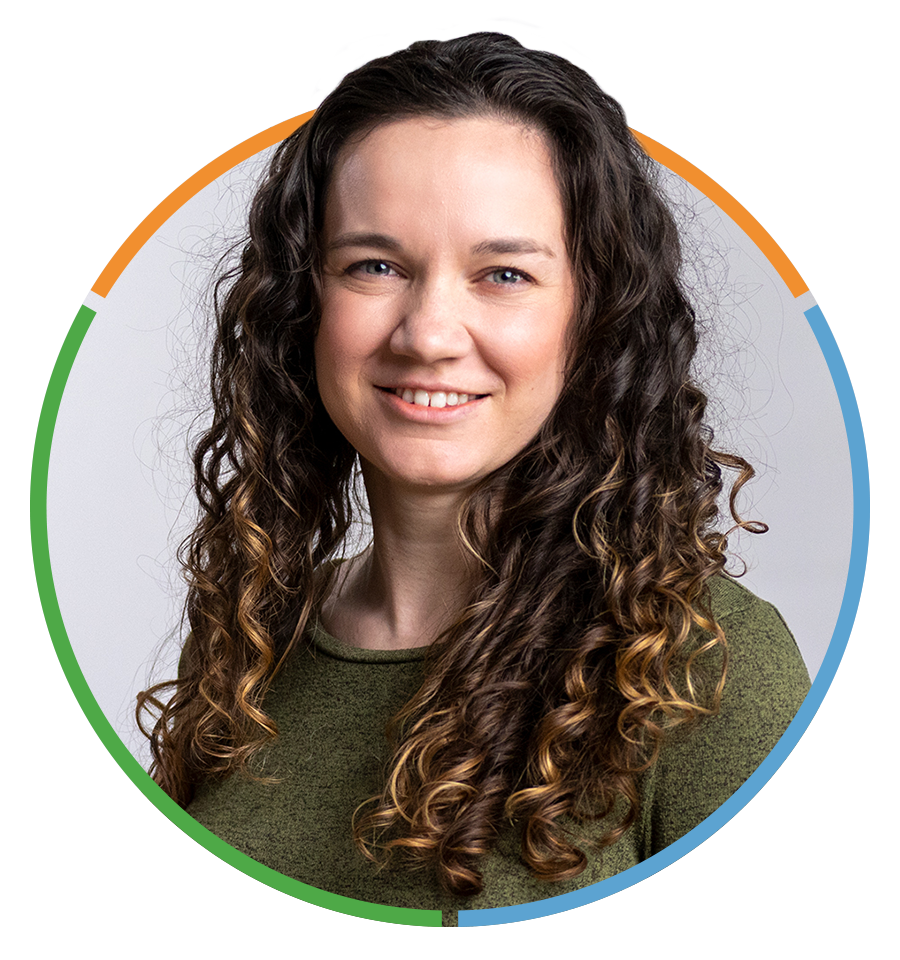How One Sexual Health Clinic Uses Outcomes to Empower Clients for Healthy Choices
Savannah Aleckson
Events Director/Adjunct Instructor
Read more from Savannah
In the wake of the Supreme Court’s monumental decision to overturn Roe vs. Wade, people increasingly will turn to private, local pregnancy clinics for support. Fortunately, many of these clinics are well-positioned for this sudden cultural pivot, as they’ve been sharpening their strategic care for men and women in crisis for many years. One such clinic is Choices Medical Services, located in Joplin, Missouri.
Choices Medical Services helps men and women facing a variety of sexual health crises, from unexpected pregnancy to sexually transmitted diseases (STDs).

Karolyn Schrage Choices Executive Director
Choices’ mission is to “empower individuals to make healthy life choices through education and medical services.” According to Choices Executive Director Karolyn Schrage, that empowerment is delivered through education, access to quality health services, and compassionate support.
But there’s a difference between intuiting versus knowing that the education and services provided actually result in healthier life choices. And at Choices, they make it their business to know that what they are doing works; if it doesn’t, they are quick to course correct.
This is accomplished through rigorous data collection and outcomes measurement. As Karolyn puts it, for Choices, it’s all about “constant review of statistical evidence and re-shaping of programs accordingly.” There’s no guessing about each of their program’s effectiveness.
When asked about the demographics of those served through Choices, Karolyn laughs: Their services truly run the gamut and serve both men and women, of all ages, from any economic level. While their clients do vary quite a bit, Karolyn identifies young women who don’t have access to healthcare because they are below the poverty line as most prevalent. Regardless, across the spectrum of clientele, Choices is purposeful in making sure their strategies really work.
Choices’ strategy to bolster sexual health and healthy life choices for their clientele is primarily achieved through prevention and intervention services.
On the prevention side, Choices is active in over a dozen local school districts through their program Compass, providing medically accurate information with the goal to delay teens’ sexual activity. Designed for 7th-9th graders, Compass is a 10-day program that educates students on STDs and STIs, pregnancy, contraception, healthy dating relationships and boundaries, and more.
Rather than trust that this programming is influencing teens to delay sexual activity (ideally until marriage), Choices staff is intentional about measuring attitudes, perceptions, and ideas about sex and relationships before and after the class via an anonymous survey (taken online via SurveyMonkey). To quantify shifting perspectives on an individual level, Choices is able to match pre- and post-tests while still maintaining anonymity for each student.
In the test, certain questions are intended to quantify increased understanding: Students are asked about the effectiveness of certain types of birth control, about STDs/STIs, and where they could go if they had a question about their sexual health. They’re also asked about their previous sexual activity to identify each student’s starting point. The most important part of the survey, however, comes at the end: Are students more inclined to wait to have sex than they were before participation in Compass?
Fortunately, the data is clear: The program is well-received by teens and does result in reinforced commitment to delay sexual activity, even for those who have been previously sexually active. In fact, this was confirmed by an in-depth analysis by researchers at Missouri State University.
Sometimes, the data clearly support that what you’re doing is working, and possibly only minor tweaks are needed, such as with Choices’ Compass program. However, Karolyn and her team at Choices understand that isn’t always the case: A strategic, well-thought plan must be sensitive to the signals the data are giving, and the team must be willing to adjust accordingly even if that means making painful decisions to cut certain programs or services. This has been evidenced on the intervention side, the second prong of Choices’ strategic approach.
Choices provides intervention services for men and women in the Joplin, Missouri area who are experiencing a sexual health crisis.  This includes early pregnancy detection, STD/STI testing, ultrasounds, limited OB-GYN consults, and more. The goal is to promote healthy choices that foster holistic wellbeing and to encourage women with unintended pregnancies to consider medically accurate information about their options.
This includes early pregnancy detection, STD/STI testing, ultrasounds, limited OB-GYN consults, and more. The goal is to promote healthy choices that foster holistic wellbeing and to encourage women with unintended pregnancies to consider medically accurate information about their options.
The strategic plan to accomplish this goal begins before clients even walk through the door–or even before they’ve heard of Choices. In the wake of Roe vs. Wade being overturned, Choices understands the need to be increasingly proactive in informing those in the area with information about their free and confidential services. One strategy Choices implements to reach these folks is through social media campaigns, ensuring that their clinic pops up in the search results for those in the area who search topics relevant to pregnancy. They dutifully track how many clicks those ads receive as well as how many of the women–along with their partners–end up coming through Choices’ doors, all to ensure that their services are communicated clearly and the investment is worthwhile.
Once women are at Choices, they meet with a friendly patient advocate who asks questions to learn her background, lends a listening ear, and helps create a supportive, welcoming environment for the client. In addition to filling out routine paperwork detailing contact information and medical history, the client is asked to complete a decision guide once she’s alone in the room. This guide helps Choices gauge the client’s inclination toward abortion, the quality of her support system, and any specific concerns she has, such as abuse, addiction, childcare. The pregnancy is confirmed by a urine sample and an ultrasound in this first appointment. Typically, second and third appointments are scheduled for follow-up ultrasounds and a meeting with a volunteer OB-GYN, who makes recommendations for next steps. Throughout the nine months of pregnancy, Choices reaches out via phone call to the client to offer support and guidance.
At every step along the way, Choices is collecting data: They learn about the client’s situation and her attitude toward her pregnancy from the interview with the patient advocate and the decision guide, they track each client’s decision to continue to engage with Choices, and, finally, they track the client’s ultimate decision as to whether or not to carry the pregnancy to term. Happily, through this careful tracking, Choices is able to report that 90% of abortion-vulnerable women they serve choose not to abort.
Because Choices cares about each client’s holistic wellbeing, Choices also tracks other outcomes, including each time a spiritual discussion is generated by their clinic staff, changes in healthier lifestyle changes following HIV/STD testing appointments, and changes in knowledge after completion of parenting class modules.
However, as alluded to earlier, the data do not always give “two thumbs up” for every output. And when the data suggests that something’s not working, it’s time to re-tool or even cut programs or services entirely. Choices has certainly experienced their fair share of this in their continual effort to sharpen their effectiveness.
For example, Karolyn shares that Choices used to meet with women for all nine months of pre-natal appointments but then realized through their data tracking that responsibility needed to shift to area hospitals.
“We were finding that these prenatal appointments were so numerous and so long that they were preventing us from meeting with as many abortion-minded women early on in pregnancy as we could,” Karolyn explains. Knowing that those first several weeks of pregnancy are incredibly important and a great opportunity to influence someone who may be considering an abortion, they decided to cut back on other good outputs so that they could focus on those that were most important and led to their most desired outcomes.
Sometimes, the data led Choices staff to make decisions that were even counterintuitive. Being mindful of limited resources that were generously donated, Choices carefully tracked data from a new medical clinic that they had opened in a nearby community, a location about which they were very optimistic. However, their data collection showed over time that fewer resources were needed at the new location, whereas demand at their original Joplin location continued to increase. Eventually, this caused Choices staff to make the difficult decision to close the doors of their new medical clinic so they could focus on the location with the most demand.
“It was entirely based on watching the stats,” Karolyn explains concerning the decision. “As much as my heart didn’t want to give up, in the end, the outcomes spoke louder than my desires.”
Karolyn emphasizes Choices’ desire to be a faithful steward of all the resources that were donated to them: As a 100% privately-funded ministry, they rely on every dollar the community gives them and strive to use it wisely. Fortunately, when you’re tracking outcomes, it makes it easier to explain decisions that may be unpopular with donors, such as closing the new medical clinic. “Because we were tracking data, we were able to go back to donors and show them the math,” Karolyn shares. “Then they understood our reasoning, and it also demonstrated our heart for prudent stewardship of resources. The data enabled us to explain our need to calibrate and re-allocate according to what made the most sense.”
The Choices staff is composed of compassionate employees and volunteers motivated by a heart for hurting men and women experiencing sexual health crises. However, in this line of work, they’re careful to let their minds discipline their emotions.
“You can step into something in faith, but when you have your data in place, those should not work against the Holy Spirit,” says Karolyn. “We’re moving to where God is moving. We do believe in intuitive walking in the Spirit, but we also believe that should be based in logistics.”
Karolyn uses the construction of the temple as described in the Old Testament as an example of holding faith and reason in tension. “Those building the temple stepped out in faith to undertake this massive project,” she says. “But reading through the pages and pages of the description of that process demonstrates how much precision and strategic planning was involved.
“So often, we want the temple outcome but without the precision to get there. That’s not how it works. It’s all about checks and balances,” Karolyn explains.
Finally, Karolyn shares some of the different iterations of Choices’ mission statement in accordance with their outcomes measurement. It’s most common that nonprofits will choose their outputs–services provided, classes offered, etc–based on their mission statement. But it can be the other way around, in which the mission statement is modified to better match the outputs and outcomes of the organization. Choices is a prime example of this.
Choices’ mission statement used to be as follows: “Dedicated to upholding the dignity of life through medical services, education, and resources.” However, Karolyn shares that they realized this mission statement resonated more with donors than with their intended clientele—women considering abortion could find that language alienating. Furthermore, it was no longer indicative of what Choices was doing. Their mission statement and accompanying by-laws focused on mothers in crisis, but Choices increasingly found themselves focused on the family as a whole: Being more intentional about involving the father from the beginning and educating children about sexual health and healthy life choices through the local school systems.
Careful to first ensure that this was not mere mission drift but rather a strategic shift toward their desired area of impact, Choices eventually changed their mission statement to the following: “Empowering individuals to make healthy life choices through education and medical services.”
Choices is dedicated to doing just that, even in the shifting sands of politics and culture. But what’s more, they’re ensuring they’re doing it in a truly impactful way through thorough, careful outcomes measurement.
Choices Medical Services is a True Charity Network member. You can connect with Choices Executive Director Karolyn Schrage on the member’s portal.
Want help with outcomes measurement? Network members can check out the Outcomes Toolkit or our Real Results webinar on measuring outcomes.
Not a Network member? Learn more about member-exclusive Toolkits and webinars.



